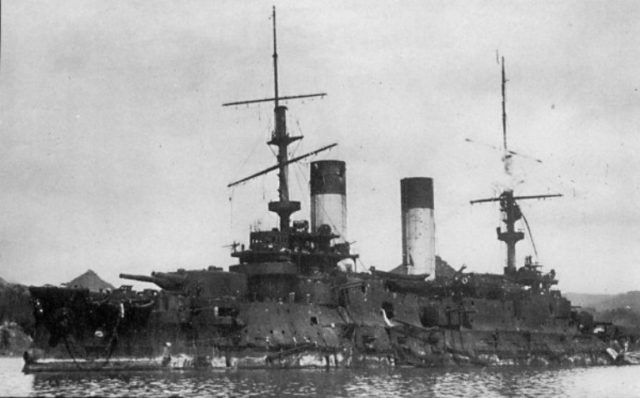The Russian Empire started the Imperial Russian Navy in 1696, and it ended in 1917 with the February Revolution.
It grew out of a smaller force, formed before Peter the Great founded the regular Russian Navy during the Second Azov Campaign.
It expanded during the second half of the 18th century and in the early part of the 19th century reached its greatest strength, falling just behind the British and French fleets in size.
Due to Russia’s slow technical and economic development in the first half of the 19th century, their navy went into a period of decline, but went into a growth spurt in the latter part of the century under the reign of Tsar Nicholas II until most of its Pacific Fleet was decimated in the disastrous Russo-Japanese War.
WWI was a mixed bag for the navy, with the Germans gaining the upper hand in the Baltic Sea but the Black Sea going to the Russians.
The Russian Revolution was the end for the Imperial Navy because the crews were fighting both sides and the surviving ships formed the core of the Soviet Navy in 1918.






The Black Sea Fleet had five lines of battle ships and 19 frigates in 1787, the Baltic Fleet had 23 ships of the line and 130 frigates in 1788.
The Russian Navy was made up of the Baltic and the Black Sea Fleets, Caspian Flotilla, White Sea Flotilla and Okhotsk Flotilla in the early 19th century.
The Ministry of Naval Forces was established in 1802 and then renamed the Naval Ministry in 1815.
The Russians built their first steamboat in 1826 and named it Izhora. It was equipped with eight cannons.
Then in 1836, they built the first paddle steam frigate for the Russian Navy, and it was called Bogatyr.
From 1803 to 1855, Russian sailors took 40 tours and long distance voyages, most of which were to help support their Pacific colonies of Alaska and California, also on the ports of the eastern seaboard of Siberia. Because of the voyages, the Russians got to do a lot of exploration of the Far East, different oceans and they contributed a lot of important scientific research materials and findings in Pacific, Antarctic and Arctic sites of operations.
In 1905, at the end of the Russo-Japanese war, Russia went from being the third largest naval power to the sixth.
Russian naval activities focus shifted back from the Far East to the Baltic.
The Baltic Fleets task was to defend the Baltic Sea and Saint Petersburg from the Germans.


















In 1906, Tsar Nicholas II created a Naval General Staff. In the beginning, attention was directed to the creation of mine-laying and a submarine fleet.
An ambitious expansion program was put in front of the Duma between 1907-1908 but was voted down. In 1909, the Bosnian Crisis forced a strategic reconsideration, and new Gangut-class battleships, cruisers and destroyers were ordered for the Baltic Fleet.
Due to relations with Turkey getting worse, more new ships including the Imperatrista Meriya-class battleships were also needed for the Black Sea Fleet. From 1906-1913, the total Russian naval cost was $519 million, which put them in fifth place behind Britain, Germany, France and the United States.
In-order-to rearm the naval program meant having to go outside sources including a significant element of foreign participants with several ships (including the cruiser Rurik) and machinery was ordered from foreign firms.
Once WWI broke out, ships and equipment that were being built by Germans were confiscated.
Equipment from Britain was slow in reaching Russia or was diverted to Western Allies’ own war effort.
